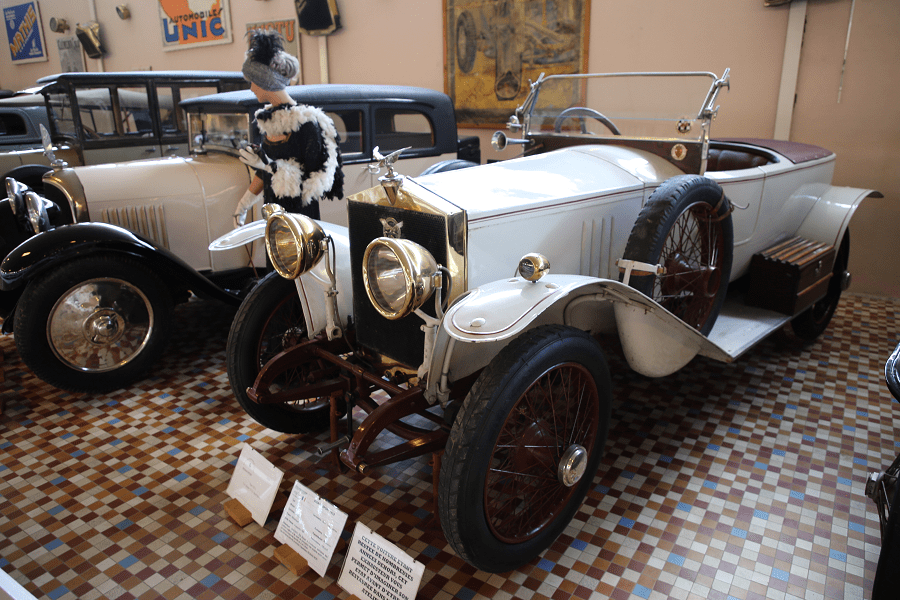White Bignan Sport Type 132 C from 1919 with four cylinders (3200 cc). Max. speed: 100 km/h. Made in France
The Bignan was a French automobile manufactured between 1918 and 1931 on the north side of central Paris, in Courbevoie. The business was created, and till the mid 1920s-headed up, by Jacques Bignan.
Jacques Bignan produced bespoke engines before the war, but only after the cessation of hostilities did he register, in 1918, the company “Établissements Industriels J. Bignan”, and emerged as an automobile manufacturer on his own account, taking stand number 84 at the Motor Show in October 1919.
The first Bignan was powered by a 2,940 cc (25 CV/HP) four-cylinder engine and sat on a 2,860 mm (112.6 in) wheelbase. At the end of 1919, the manufacturer was quoting a list price for the car of 30,000 francs in bare chassis form.
Tires were not included in the price, which was at this time not unusual.
The manufacturer was also listing a price of 38,500 francs for a “torpedo-bodied” car. The majority of the vehicles produced had tourer bodies. Several of these cars were used as official vehicles for the 1920 Tour de France.
Two new models were launched in 1922 – the 11CV, with a 2-litre engine, and a badge-engineered version of the Salmson AL3, a one-litre four-cylinder powered sports car.
The 11CV had a four-speed gearbox and servo-assisted brakes.
The production model developed 50 bhp, but the competition version developed 70 bhp, due to the use of desmodromic valves. Only two of these competition models were built, but they were considered fast and reliable. The best competition result was a class victory at Spa-Francorchamps. The 11CV was redesigned in 1926, with an eight-valve engine featuring twin oil pumps, giving 60 bhp.
The company collapsed in 1926, and were taken over by the Société La Cigogne, after which Jacques Bignan had to leave the company.












